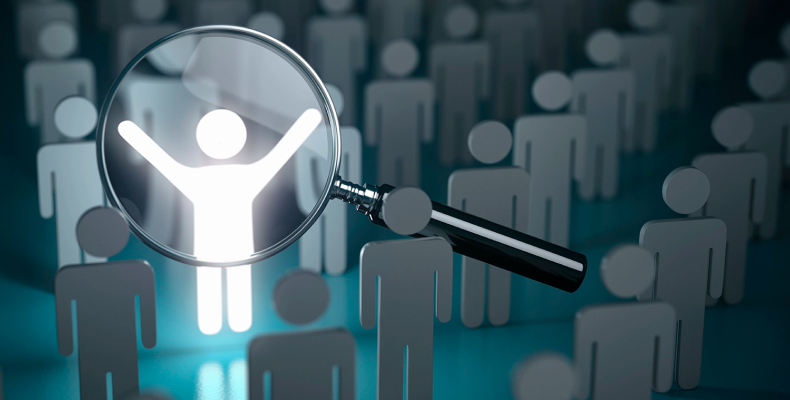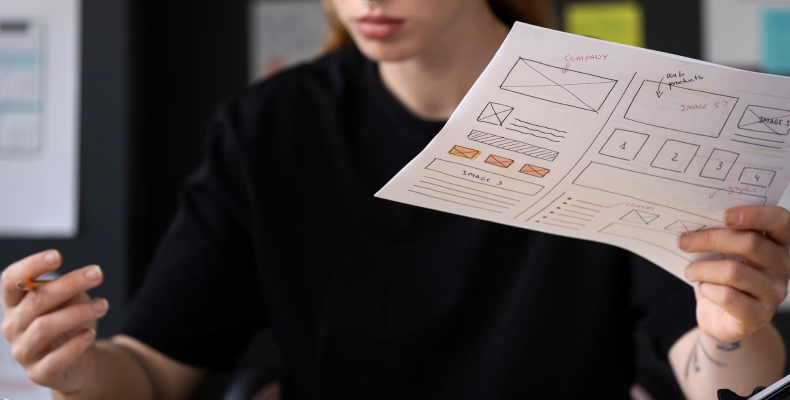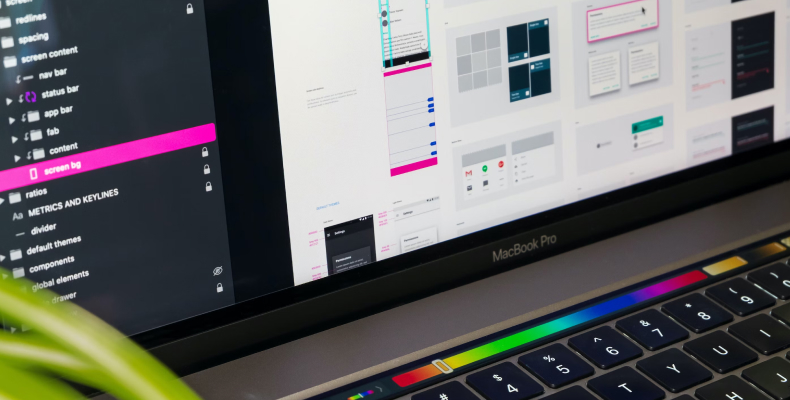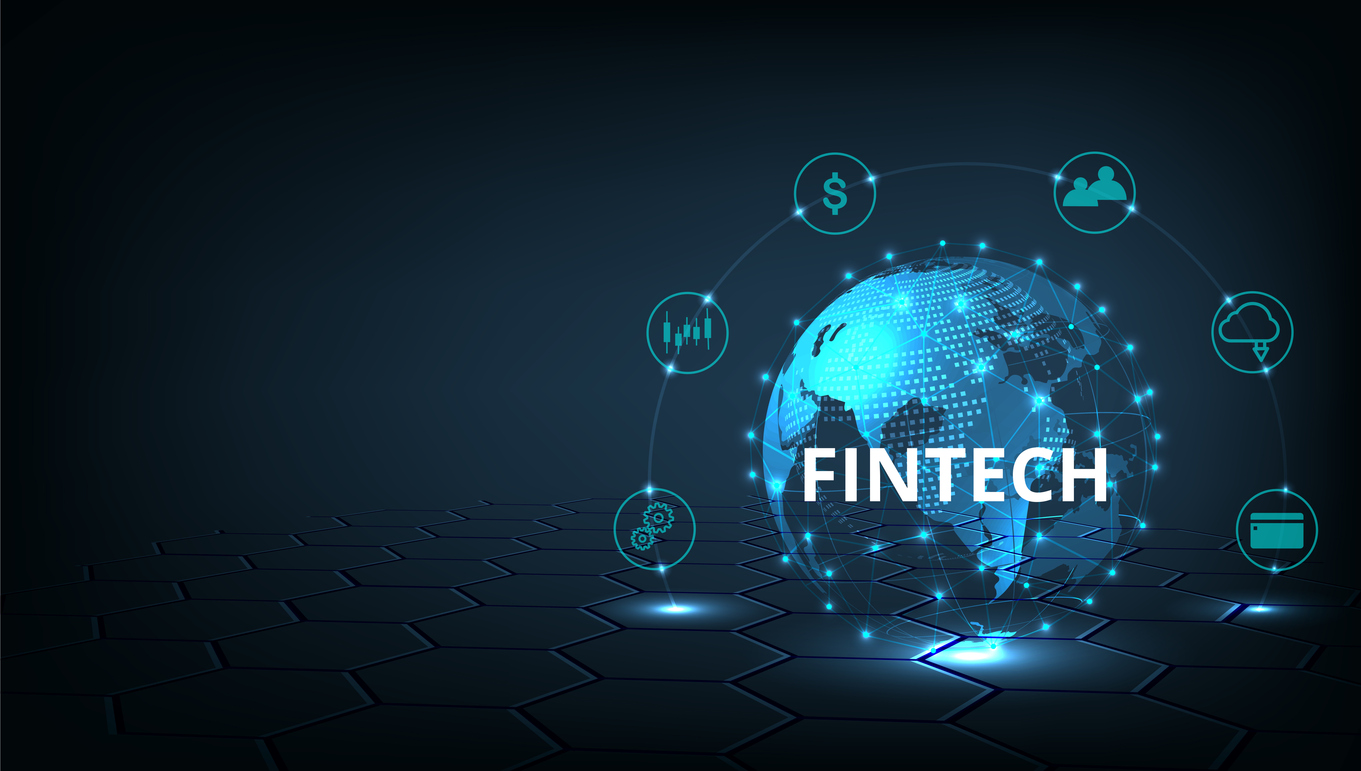Discovery is a key stage in product design. It gives you deep insight into user pain points and preferences, which impacts your proposed solution and its success.
Product discovery: Guide for better user understanding

 18 minutes read
18 minutes read
Content
Product discovery is the very first stage of the product development journey. It is fair to call it a never-ending one, too. It guides you through creating your product, provides insights, and helps with the following steps or turns. On top of that, ecommerce product discovery helps understand customers’ exact needs and offers the products they need.
This guide explains the concept of discovery and its techniques. It’s also about tools, common mistakes, and useful tips and recommendations.
What is product discovery?
It is a process of uncovering, understanding and defining the main aspects of a web or mobile product. Its goal is to create a solution that addresses users’ needs and aligns with business goals. It includes user research, market analysis, competitive research, and concept validation. The goal is to understand the target audience, its pain points, and its behavior.
The outcome of this phase is a roadmap for the development process. It’s based on a clear product vision and defined user requirements.
The benefits of product discovery
The product discovery increases your chances of building a successful and valuable product. It will resonate with users and drive business growth. Here are its top three benefits.
Lower risk and waste
Skipping a product discovery means gambling on assumptions. Instead of learning about your users’ needs and desires, you’ll be guessing. During the digital product discovery, you confirm your idea and product before spending time and money building and marketing it. It also allows your design and development teams to pivot when needed to save cost and time in the long run.
Innovation and competitive advantage
While exploring the product, you learn about marketing trends and the competitive landscape. You can differentiate your product from similar ones and stay ahead in the demand. You create innovative solutions and deliver a competitive advantage.
Efficient and smooth delivery process
The product discovery process inspires your team to be creative and think outside the box. Incorporate customers’ viewpoints from the very beginning for more innovative and sophisticated solutions. The business team will understand which ideas are market opportunities and which ones to put aside.

Comparing continuous and initial product discovery
Understanding the distinction between initial and continuous product discovery is fundamental for any product development team aiming to create and maintain successful products. Initial product discovery is the starting point of the product development journey. It involves identifying market needs, defining the problem, conceptualizing solutions, and validating ideas. This phase is crucial as it sets the foundation for the product by ensuring that it addresses a real and significant need in the market. During this stage, teams engage in extensive market research, user interviews, and competitive analysis to gather insights and validate their assumptions. The goal is to build a solid understanding of the problem space and to develop a product concept that has a high likelihood of success. However, this phase is often a one-time effort that occurs before the actual development begins, and it may not account for the dynamic nature of user needs and market conditions.
In contrast, continuous product discovery is an ongoing process that extends throughout the entire product lifecycle. Unlike the initial discovery phase, continuous discovery involves regularly gathering user feedback, iteratively testing new ideas, and making data-driven decisions. This approach ensures that the product evolves in response to changing user needs and market trends. Continuous discovery is not just about collecting feedback; it’s about creating a feedback loop where insights are continuously integrated into the product development process. This iterative approach allows teams to quickly identify and address issues, experiment with new features, and refine the product based on real-world usage. By maintaining a close connection with users, teams can ensure that their product remains relevant and valuable over time.
One of the key benefits of continuous product discovery is enhanced user satisfaction. By regularly incorporating user feedback, teams can make informed decisions that align with user expectations. This leads to a product that better meets the needs of its users, resulting in higher satisfaction and loyalty. Continuous discovery also reduces the risk of costly mistakes by allowing teams to validate their ideas early and often. This proactive approach helps identify potential issues before they become major problems, saving time and resources in the long run. Moreover, continuous discovery fosters a culture of innovation within the team. By constantly exploring new ideas and testing hypotheses, teams can stay ahead of the competition and deliver cutting-edge solutions.
Continuous product discovery also plays a crucial role in sustainable growth. Products that adapt to changing user needs and market conditions are more likely to achieve long-term success. Continuous discovery enables teams to prioritize features that deliver the most value, ensuring that resources are allocated effectively. This adaptability is particularly important in today’s fast-paced market, where user preferences and technological advancements can shift rapidly. By staying attuned to these changes, teams can make strategic decisions that drive growth and maintain a competitive edge. Furthermore, continuous discovery supports a data-driven approach to product development. By leveraging analytics and user insights, teams can make evidence-based decisions that enhance the product’s performance and user experience.
While initial product discovery is essential for laying the groundwork, continuous product discovery is vital for maintaining and enhancing the product’s value throughout its lifecycle. Initial discovery provides the necessary insights to develop a viable product concept, but it is the continuous discovery that ensures the product remains aligned with user needs and market trends. By embracing continuous discovery, teams can create products that not only meet the initial market demand but also evolve to address emerging needs and opportunities. This ongoing process of discovery and adaptation is key to building products that are not only successful at launch but continue to deliver value and drive growth over time.
Overview of product discovery frameworks
Incorporating a detailed section on various product discovery frameworks can significantly enhance the value of your article. Here, we explore six prominent frameworks: Dual-track, Design Sprint, Jobs To Be Done, Double Diamond, Lean Startup, and Opportunity Solution Tree. Each framework is discussed with examples, case studies, and an analysis of their advantages and limitations to help teams choose the most appropriate one for their specific context.
Dual-track agile
Dual-track Agile is a methodology that divides product development into two parallel tracks: discovery and delivery. The discovery track focuses on exploring ideas, gathering customer feedback, and validating product concepts, while the delivery track concentrates on turning validated ideas into shippable products. This approach ensures continuous customer engagement and rapid prototyping, which helps in aligning the product with user needs throughout its lifecycle.
Example: A software company used Dual-track Agile to develop a new feature for their project management tool. The discovery team conducted user interviews and created prototypes, while the delivery team worked on implementing the validated features. This parallel approach allowed them to quickly iterate based on user feedback and deliver a feature that significantly improved user satisfaction.
Advantages: Dual-track Agile promotes continuous user feedback and rapid iteration, reducing the risk of building features that do not meet user needs. It also fosters collaboration between discovery and delivery teams, ensuring a seamless transition from concept to implementation.
Limitations: This framework requires a high level of coordination between the two tracks, which can be challenging for teams with limited resources. Additionally, it may lead to increased workload and complexity in managing parallel processes.
Design sprint
The Design Sprint is a five-day process developed by Google Ventures for rapidly prototyping and testing product ideas. It involves mapping out the problem, sketching solutions, deciding on the best approach, creating a prototype, and testing it with users. This structured approach helps teams validate concepts quickly and efficiently.
Example: A fintech startup used a Design Sprint to develop a new mobile app feature. Over five days, the team identified user pain points, brainstormed solutions, created a prototype, and tested it with a small group of users. The feedback gathered during the sprint helped them refine the feature before full-scale development.
Advantages: Design Sprints provide a clear and time-bound process for validating ideas, which can accelerate decision-making and reduce the time to market. They also encourage cross-functional collaboration and creativity.
Limitations: The intense nature of Design Sprints can be demanding on team members, and the short timeframe may not be sufficient for complex problems. Additionally, the focus on rapid prototyping may lead to overlooking long-term considerations.
Jobs to be done (JTBD)
The Jobs To Be Done framework focuses on understanding the underlying jobs that customers hire products to do. It emphasizes identifying the functional, emotional, and social dimensions of these jobs to create solutions that truly meet customer needs.
Example: A consumer electronics company used the JTBD framework to redesign their smart home device. By understanding that customers wanted a device that seamlessly integrated with their daily routines and provided peace of mind, they developed features that addressed these specific jobs, resulting in higher customer satisfaction and increased sales.
Advantages: JTBD provides deep insights into customer motivations and desired outcomes, leading to more customer-centric products. It helps teams prioritize features that deliver the most value and differentiate their products in the market.
Limitations: Implementing JTBD requires thorough research and a deep understanding of customer behavior, which can be time-consuming. It may also be challenging to translate abstract jobs into concrete product features.
Double diamond
The Double Diamond framework, introduced by the Design Council, consists of four phases: Discover, Define, Develop, and Deliver. It encourages teams to diverge and explore a wide range of ideas before converging on the best solutions.
Example: A healthcare company used the Double Diamond framework to develop a new patient management system. During the Discover phase, they conducted extensive user research to identify pain points. In the Define phase, they narrowed down the key problems to address. The Develop phase involved creating and testing prototypes, and the Deliver phase focused on implementing the final solution.
Advantages: The Double Diamond framework provides a structured approach to problem-solving, ensuring that teams thoroughly explore and validate ideas before implementation. It promotes creativity and user-centered design.
Limitations: The process can be time-consuming, especially in the Discover and Define phases. It may also require significant resources to conduct comprehensive research and testing.
Lean startup
The Lean Startup methodology, popularized by Eric Ries, emphasizes rapid experimentation, validated learning, and iterative development. It involves creating a Minimum Viable Product (MVP) to test hypotheses and gather user feedback before scaling.
Example: A SaaS company used the Lean Startup approach to launch a new analytics tool. They developed an MVP with core features and released it to a small group of users. Based on the feedback, they iterated and improved the product, gradually adding more features and scaling up.
Advantages: Lean Startup minimizes the risk of building products that do not meet market needs by focusing on validated learning and iterative development. It allows teams to pivot quickly based on user feedback and market conditions.
Limitations: The focus on rapid experimentation may lead to short-term thinking and neglect of long-term strategy. Additionally, the iterative process can be resource-intensive and may require frequent adjustments.
Opportunity solution tree (OST)
The Opportunity Solution Tree, developed by Teresa Torres, is a visual tool that helps teams map out opportunities and solutions to achieve desired outcomes. It involves identifying opportunities, generating solution ideas, and testing them to find the best path forward.
Example: An e-commerce company used an OST to improve their checkout process. They mapped out various opportunities to enhance user experience, such as reducing cart abandonment and simplifying payment options. By testing different solutions, they identified the most effective changes and implemented them, resulting in higher conversion rates.
Advantages: OST provides a clear and visual representation of the discovery process, helping teams stay aligned and focused on achieving outcomes. It encourages systematic exploration and validation of opportunities and solutions.
Limitations: Creating and maintaining an OST requires continuous effort and collaboration. It may also be challenging to prioritize opportunities and solutions effectively, especially in complex projects.
Key steps in the discovery process
User research
At this stage, you absorb as much information about your target audience as possible. Focus on pain points, needs, and expectations until a clear pattern appears. The best-known techniques include interviewing, running surveys, and user testing. The goal is to identify a real task instead of validating an initial idea.
Problem definition
The next step is defining the problem or opportunity the product aims to address. It means analyzing insights and identifying common patterns. As a result, you get a clear problem statement — focused, specific, and actionable.
Ideation
At this stage, your teams finally start cracking the problem and brainstorming solutions. Ideas can come from team members, stakeholders, or user feedback. Encourage creativity and the ability to explore different perspectives. These qualities help generate innovative and viable product concepts.
Concept validation
Validating potential solutions before investing significant resources is a must. This phase involves creating prototypes or mock-ups to test the concepts with users and collect feedback. Conduct usability tests and move to the next iteration.
Typically, you go through this stage several times to test multiple iterations and concepts.
Roadmapping
After concept validation, the team moves to prioritize features. Considering user value, business goals, market trends, and technical feasibility is vital. The endpoint is a roadmap for the development process. The roadmap outlines the features sequence, milestones, and timelines. It guides the development process from the beginning to the release.
Remember you can always step back and move in a different direction if it’s reasonable.
Common mistakes in the product discovery process
Lack of user research
Not paying proper attention to user research is the most significant mistake. It might be time and money-consuming, but it pays back well. Skipping this point, you risk going in the wrong direction from the beginning.
Ignoring feedback
Overlooking user feedback results in unsolved problems and missed opportunities for improvement. Listen to users, analyze, and incorporate their feedback to make the product user-centric.
Unclear problem definition
Unclear definitions make the entire development process vague and unspecific. Operate data, facts, and insights, not someone’s sixth sense or theoretical knowledge.
Premature solutions
Rushing into action can result in wasted effort, time, and money. Explore solutions, brainstorm them with your teams, and commit to one.
Inadequate validation
With inadequate validation of hypotheses, you risk building a product based on assumptions. Run regular hypothesis testing and validations. This way, you will deliver a product that resonates with both users and businesses.

Key product discovery principles
Be user-centric. Always put your users at the center of your product discovery process. Make all the processes spin around them. This way, you’ll understand what they like, how they behave, and what bothers them.
Don’t stop learning. Make constant learning a part of your culture. Constantly work with feedback, test your ideas, and ask for feedback one more time. Pay attention to failures — they are the most valuable source of information. At some point, it is all about learning from failing.
Work as a team. The UX/UI design team, marketing, development, and business representatives must collaborate during digital product discovery. Such collaboration leads to diverse perspectives and ensures a holistic approach to problem-solving.
Take small steps. By adopting an iterative method, you allow gradual improvement and refinement. The goal is to gather feedback and make improvements and adjustments step by step. You don’t have to deliver a perfect product on the first try.
Eventually, you might end up in a slightly or totally different place from where you expected.
Base Your Decisions on Data. Collect and analyze relevant data, such as user metrics, market trends, and competitive analysis. It provides insights about the market you’re entering. Make all your choices by leveraging these data.
Product discovery techniques
Customer interviews
The easiest way to define what people need is to ask directly — organize interviews. You can ask all follow-up questions and be creative. This way you educate yourself about the latest trends and forever-changing opinions. Interviews disclose the motivations and struggles of your potential clients. You also hear the language they use and discover the things they value.
The only pitfall is that interviews take a lot of time to organize, conduct, and analyze. They can also be expensive, so once you start speaking to a customer — make the most of this time.
Product analytics
Data provided by product analytics is mostly used after a product launch. However, it can inspire new features and be a ground for changes during a product discovery. Compare the main theses from your surveys or interviews with metrics. See whether they correspond, draw conclusions, and make decisions afterward.
Competitor analysis
Learning how users feel about your product has a lot to do with the options they have. Competitor analysis allows you to see the problem from different perspectives. Keep in mind that your competitors have gone through a digital product discovery themselves. Their solutions are a reflection of their insights. Thoroughly explore their products and evaluate them from a user’s perspective.
Brainstorming
Brainstorming is the most straightforward way to come up with ideas. Organize a meet-up for your teams and key stakeholders. Communicate the objective and the problem. During the ideas-sharing round, you will probably notice consistent themes emerging.
The outcome of brainstorms is usually a bunch of ideas to try.
Prototyping
Create a paper prototype or low-fidelity sketch for initial product designs. Complement it and adjust for new features. Make your prototype easy to tweak, iterate, or scrap if needed, based on customer feedback. Having one, you can make all edits before spending money on developing the solution.
Use prototype testing to identify how your users interact with early versions of your product. Review data to make improvements in the next iterations.
Usability testing
This method helps evaluate how easy it is to use your product or website. Present your users with test scenarios and tasks they need to complete on your platform. Use insights and comments from this usability test to make the following improvements.

Types of product discovery tools
User research tools are used to gather information about user preferences and behavior. SurveyMonkey is a well-known example. With its help, you can collect user feedback, conduct surveys, and perform usability tests. As a result, you receive game-changing data.
Analytics tools such as Google Analytics offer essential insights into user interactions and behavior within digital products. Monitor metrics like conversion rates, page views, and user flows. They help you notice patterns that involve product strategy.
Design and prototyping tools, like Figma, make it easy for designers to create visually appealing and interactive prototypes and present them to other teams. These tools ease collaboration and work with feedback, ensuring effective iterations.
Market and competitive research tools such as SimilarWeb provide data on market trends, competitor analysis, and industry research. You can gain insights into the competitive landscape and identify market gaps.
Collaboration and communication tools, like Microsoft Teams, foster teamwork and information sharing. Their functionality usually includes real-time communication, file sharing, and collaboration on all activities.
Tips for successful digital product discovery
Define the goals and objectives. Establish what outcome you expect from a product discovery process. It might be understanding user needs, exploring market opportunities, or improving an existing product. With clear goals, the process goes smoothly, and every team focuses on their part of one big job.
Place the user at the center of your efforts. Invest time and resources in interviews, surveys, and usability testing. Listen to user feedback and incorporate it into the decision-making process.
Maintain transparent communication throughout the process. Be open about insights, progress, and troubles with stakeholders and team members. Effective communication fosters trust and encourages collaboration, resulting in better outcomes.
Embrace the principles of agility. Be ready to adapt and adjust your plans based on new insights and market dynamics. Embrace change and pivot if necessary, making a place for improvement.
Conclusion
“If I had an hour to solve a problem, I would spend the first 55 minutes determining the problem and could solve the problem in less than five minutes.” This phrase by Albert Einstein is a textbook definition of a product discovery process. Understanding your problem makes it much easier to find a solution.
The product discovery helps define the audience and its problems. It helps to understand how it will accept your help and the outcome for both users and businesses. It also educates you about possible failures in advance, so you don’t have to pay for them later.
How Blackthorn Vision can help in product discovery
We have extensive expertise in product discovery and can assist you from the beginning or improve your existing product.
We offer a comprehensive and structured approach to understanding user needs, validating ideas, and defining a clear product vision. We have experience starting a business analysis at the beginning of the development process or using its techniques to improve a product and improve it with new features.
Contact us if you have an idea or want to improve and modernize your product. We’ll find the best ways to make it more user-oriented and profitable. Let’s make it happen!
FAQ
Why do we need product discovery?
What is continuous product discovery?
It’s a process focused on collecting and analyzing customer feedback throughout the entire development lifecycle.
What is product discovery in mobile app development?
Product discovery in mobile app development defines the app’s purpose, target audience, core features, user experience, and business objectives.
What is agile product discovery?
Agile product discovery aligns with the principles and practices of the Agile method. It’s based on iterative and collaborative processes to explain user needs, define product requirements, and confirm ideas.






























































